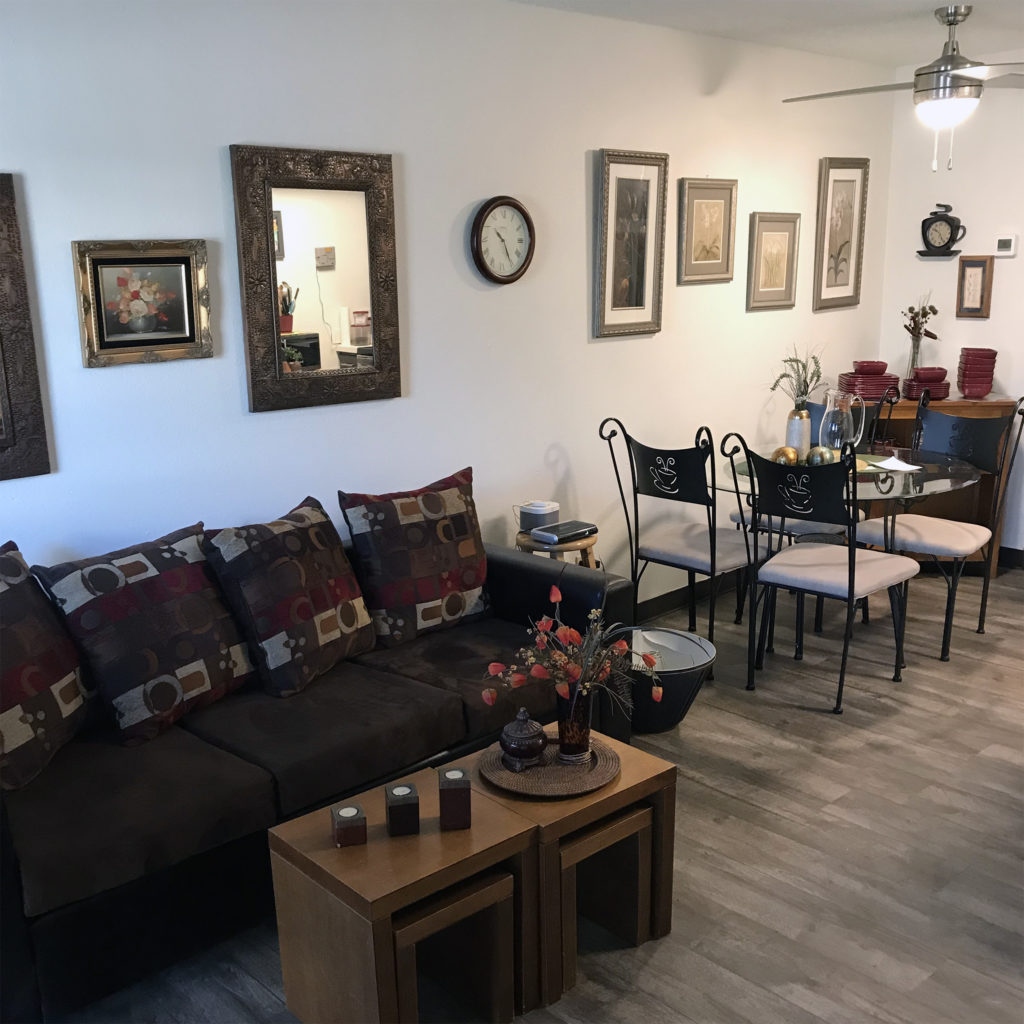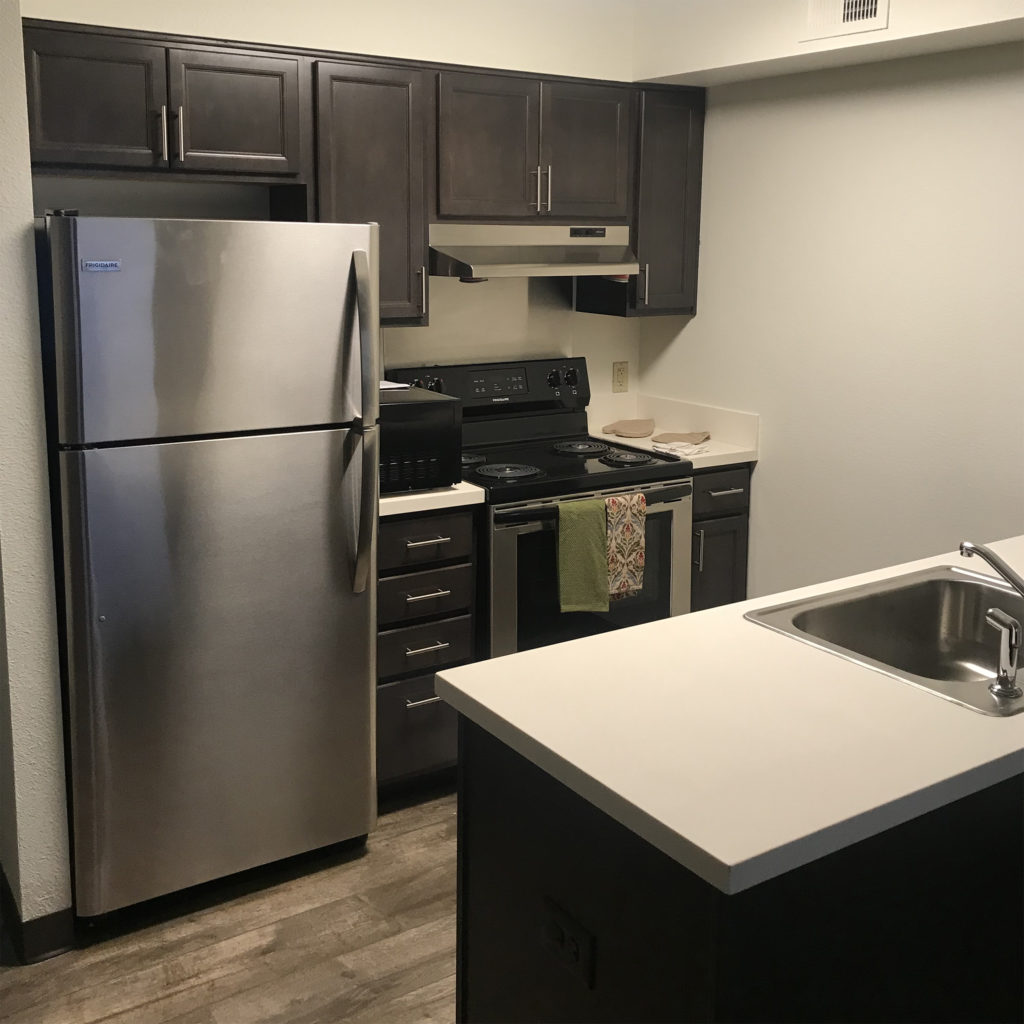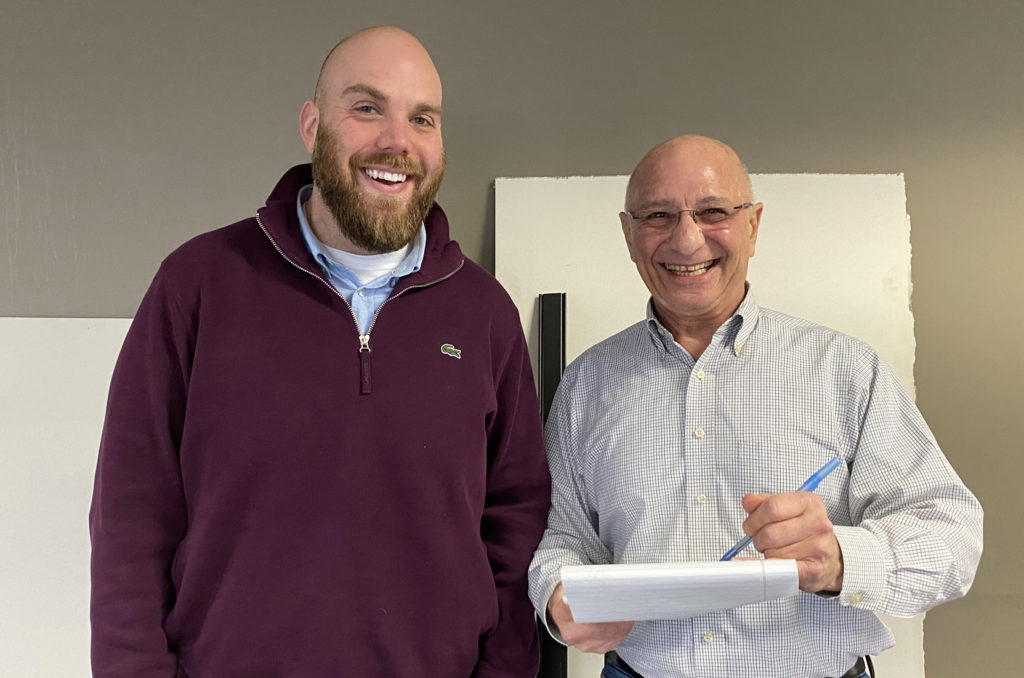Rehabbing Properties? How to Avoid Pitfalls
Harvey Buller Manager, Strategic and Business Services, PK Management“The best roof you can offer.”
At PK Management, we approach rehabbing properties with a simple saying: “if you’re going to put a roof over someone’s head, it should be the best roof you can offer.” With this philosophy running deep in our company, we work hard to go above and beyond transforming our senior and family communities. Our rehabbing efforts stem from a genuine drive to offer our residents the finest quality housing possible.
Needless to say, the process is a complicated one: it entails navigating financing options, managing vendor relationships and making sure the disruption to our resident’s life is minimal during the rehab process. After being involved with multiple rehab projects, including full building transformations, I’m excited to share strategies that will help owners overcome the biggest obstacles of rehabbing.
First: how to face the financing question.
When you’re considering a rehabbing effort, financing is the first big question to face. With affordable housing, there are tax credit loans available to help owners find the funds that allow them to modernize properties. In this way, owners can provide residents with the kinds of amenities not found in older multifamily communities. These tax credits, along with currently-low interest rates, make the decision to rehab a property much easier and more financially justifiable.
Additionally, so long as multifamily companies follow the guidelines for energy and water efficiency improvements, these owners can seize a powerful financing opportunity with the Green Financing Program from Fannie Mae. In settling on a financing option, operators have to think about how much more market rent they’ll get for the property post-rehab, compared to like-kind in the area as well.
Sometimes, operators will find that the cost of rehabbing is far too high for the expected return in rents. Maybe they’re getting $600/month from a property and in spending $3,000 per unit to rehab, they’ll still only make $800 at the end of the day if lucky. Needless to say, operators have to balance the need to deliver modern amenities with the undeniable math of a rehab ROI.
In the end, should operators decide their financing options are sound, then charting out scope of work is the next topic to tackle.
The next battle? Scope of work.
When operators consider scope of work for a rehabbing project, it’s critical that they carry out thorough market research. To assess appropriate updates, many times the driver is the property’s location. In that case, the best path forward entails an in-depth market rent analysis, looking at your competition and their amenities.
“When operators consider scope of work for a rehabbing project, it’s critical that they carry out thorough market research.”
Operators might find that stainless steel and designer toilets are a must in their region. They might also find, however, that a Home Depot brand toilet works just as well — and looks nearly the same — as a pricey designer model. The general rule of thumb in determining product scope? You want to go as modern as possible for your market at as inexpensive a rate as possible. Importantly, you want to have a clear picture of pricing, as the scope must by definition match what you’re comfortable borrowing.
When it comes to the specifics of flooring, carpeting, lighting fixtures, etc., internal PK teams pick out those products — rather than assign this work to contractors — so that we’re certain our costs line up appropriately. Speaking of contractor arrangements, it’s important to understand a few potential pitfalls before embarking on this valuable business relationship.


Syncing with contractors, deciding who buys where.
In rehabbing a property, operators will typically work with a general contractor who may in turn assign various duties to sub-contractors. Once PK has decided on our product scope, we go to the contractor and say: “we need you to put a bid together.” We may also turn to a second prospective vendor to get a competitive price.
In the end, what’s most important is that your chosen contractor understands the need for the bid to exactly match your scope of work. From there, it’s time to make decisions about whether you buy the tools and products your vendor will need for repairs or whether you feel confident they can do the job for a lower price than you could.
Once PK contractors agree to our addendum, we find as a good-sized company that our buying power is typically much greater than the contractor’s. For example, we might be doing 2.5M a year in business with a company our contractor has no relationship with. In those cases, the vendor may tell our contractor: “here’s what we want per item — plus an add-on fee.” To avoid these kinds of price increases, we’ll direct the general contractor to buy at certain sites under our name where we have strong relationships.
Even with buying decisions beyond you, there remains one potential weak point in the operator-contractor relationship. In a word? Miscommunication.
Clarity is key: avoid contractor pitfalls.
When it comes to your scope of work, you want to be very, very specific in giving directions at the start of the rehabbing process. For example, may you say you want all of the interior doors painted in each room of a unit. Perhaps your contractor hears: “just the interior doors facing the street direction.” The end result? An all-too-conspicuous mismatch — an extra round of repairs.
Unfortunately, we experienced this one first hand at PK. An entire property rehab seemed to go off without a hitch — until we realized the interior doors facing the forest side of the property were left without new paint. Naturally, we found later there had been an unfortunate misunderstanding in the initial scope conversation with our contractor.
“When it comes to your scope of work, you want to be very, very specific in giving directions at the start of the rehabbing process.”
Another possible cause for trouble centers on the buying stage. Should contractors decide to buy from their own brands or vendors, there may be consistency issues down the line as maintenance repairs become a necessity. For example, maybe your internal techs find a year after a rehab job that they need to replace a bathroom faucet. If they can’t find that same warrantied item from a vendor your company works regularly with, you’re bound to pay much higher costs than necessary and create an opportunity for inconsistency in product style and functionality.
Fortunately, PK has found that mobile inspections can do wonders toward creating a healthy company-contractor relationship from the start. Here’s why this transition has worked well for us.
Transparency all the while.
Having overseen rehab work for decades, I’ve found that mobile inspections have truly transformed the process for the better. Our teams at PK start by using Happy Inspector during the scope of work phrase. They walk through a unit with the general contractor and go line by line, reviewing everything from door stops to lamp posts, etc. This becomes the “punch list.”
Later down the line, after the contractor’s team reports the work is finished, our techs go back into the unit with that same scope of work template (“punch list”) and check each “before” spot to see if the work was indeed completed. If our techs take a time-stamped “after” picture revealing nothing changed, that’s really valuable data for us to go back to the contractor with and hold them accountable.
At that point, it’s not a conversation but just the facts — that something’s been done or not done. Additionally, having this kind of before-and-after evidence helps us communicate about future business with vendors.
On an efficiency front, having digital inspections has changed the rehabbing process dramatically because we used to have techs going through a unit with five different sheets of paper (and no pictures) trying to keep track of everything.
During those pen-and-paper days, we also relied on paper forms we received from the general contractor noting their scope of work. As we didn’t have corresponding pictures on our end, it really could evolve into a game of he-said, she-said. However, when contractors know you’re watching through digital inspections, they’re bound to do a better job. Right from the beginning, there’s great potential to smooth out any bumps in trust.
“However, when contractors know you’re watching through digital inspections, they’re bound to do a better job.”
Yet, I also believe one of the biggest factors for success in a company-contractor relationship centers on compromise where appropriate. For example, if your contractor does a corner molding and it’s just 1/10 of an inch off, we don’t always want to be uptight and tell them to pull it all off and start over. We never lessen the value at PK properties, we also recognize the cost to contractors of making certain adjustments in the very rare cases that this happens.
Finally, one thing that’s also improved for the better following our change to digital inspections is that our techs feel more involved, more empowered in the rehabbing process than ever before. Now, they have this great measuring tool, one that helps them develop the pride that something has been done correctly. Having covered contractor and staff perspectives, let’s turn to the group we keep top of mind during the rehab process: residents.
Getting the resident piece right.
Much like with our contractor relationships, the key to keeping things seamless with residents is tight communication. Naturally, when you’re rehabbing, you may have to move people out of their units, even if it is only for a few hours, which means a significant amount of coordination. Things have to work seamlessly because, if we order 50 doors and a vendor doesn’t deliver them and people are ready to leave their units for that part of the project, we’re in a bind.
Here’s another stage where our digital inspection software comes in handy, as we created a template for our social service coordinators to use as they walk through resident units post-packing. This template helps them make sure an empty unit really has been thoroughly cleaned and emptied so that contractors and sub-contractors can do their part of the puzzle seamlessly.
The only issue we’ve come up against on the resident side is occasionally we’ll have a case where someone is a hoarder. Even in those more complicated examples, we’ll have our social service coordinators put an upbeat spin on the issue, explaining: ‘Don’t worry — now is a great time for Spring cleaning!”

Fortunately, we have a social service group that takes charge of this endeavor. Once a rehab has been scheduled, we host a town hall meeting where we include all of our property associates, social service coordinators, and the contractor to share information about what’s ahead. Besides providing snacks to spur resident participation, we pass out a FAQ sheet and ensure our contractors present on the details of the rehab work.
Once that’s done, our social service coordinators take over the communication piece by going to every single unit and explaining to residents about packing requirements. From there, we not only provide the materials for residents to pack but also provide third-party teams to help them do it.
Above all, from scope of work to resident experience, PK Management believes in keeping the rehab process as positive and transparent as possible. We work hard to make sure everyone is on the same page as we transform units for the better. In the end, we find it’s the most seamless way to offer residents the very “best roof” we can.